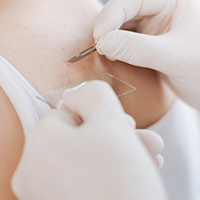
Hair can look and feel great but how do we make sure our hair and scalp are healthy?
Dermatologist and Fellow of the Australasian College of Dermatologists, Dr Karen Koh, gives some tips below on how to make sure your hair not only looks great but is healthy too.
So let’s talk hair
For many of us, our hair is an important part of who we are and how we express ourselves, but it also plays an important role in protecting the surface of our scalp.
Hair strands are made up of complex keratein proteins. While external factors like the environment and how we care for our hair can impact our hair health, changes to our hair can also be a sign of other things happening in our bodies, so it is important to keep a close eye on any unexplained changes.
Hair on our scalp grows in cycles, with different stages of growth, resting and shedding. If something triggers a change to the hair cycle, this can lead to changes in the rate and extent of hair shedding (loss). If these changes are significant your hair can become thinner.
The rate of hair growth can reflect how healthy our bodies are in general, and taking care of ourselves by eating healthily, exercising, getting enough sleep and attempting to manage stress can all help. Sometimes a severe illness such as an infection, or a physical stressor such as surgery can affect our hair. Genetics and hormonal changes can also affect hair growth.
Keep it healthy, keep it simple
To keep hair healthy, hair care should be kept simple:
- Avoid washing with excessively hot water as hot water can dry your scalp and damage your hair
- Use gentle shampoos to reduce stripping the scalp of natural oils and apply conditioner to the ends of the hair not near your scalp.
- Rinse hair thoroughly to avoid irritation.
- Avoid trauma or tension on the hair strands when your hair is wet by using a wide toothed comb to detangle, rather than brushing and avoid scratching your scalp when drying.
- Tying up wet hair leaves the scalp moist which can cause irritation and aggravate dandruff and other scalp conditions.
- Shampoo every one to three days depending on the greasiness of your hair and your exercise routine.
- When using a hair dryer or styling tools be gentle and avoid high heat or tension.
Some styling methods can damage hair strands from the root to the tip. Tight hairstyles can pull and damage follicles over time, and hair ties can snag or tangle the hairs and pull out vulnerable strands. Hair colouring can also damage the hair shafts, particularly if bleached.

Signs of a hair or scalp problem
Symptoms and signs that might indicate a hair problem include:
- Itchy or flaky scalp.
- Inflamed skin, bumps or scarring.
- Increased hair loss especially when washing.
- Decreased volume of hair, for example reduction in size of ponytail or more scalp skin visible.
- The appearance of smooth patches of hair loss
- Increased hair breakage.
- Loss of hair on other areas of the skin, for example eyebrows, lashes, beard or body hair.
Knowing when to seek expert help
If you notice a concerning change in your hair condition, you should see your General Practitioner (GP) who will check your general health and any causes for concern. They may refer you to a dermatologist.

Effective treatment for hair loss begins with finding the cause. A dermatologist will ask you questions about how long you’ve had the hair issue and how quickly it has happened. They may ask you questions about your family history of hair loss, medical conditions and recent illnesses, medications, supplements, weight loss and food intake, rashes on other areas of the skin as well as symptoms such as itch, pain, scaling/flaking, redness on the scalp itself.
They will examine the scalp and the hair, and in some cases may take photographs. They may gently pull on the hair strands to examine a single hair, or even do a scalp biopsy to look at conditions affecting the hair root.
Once your dermatologist finds the cause(s), they will tell you whether treatment is recommended or whether the hair issue will resolve on its own. Where treatment is needed, this is individualised depending on the hair loss condition and to your general health. It may include topical lotions, shampoos or creams. Some conditions may need more intensive therapies including injections or oral medications.
Dr Karen Koh is a dermatologist and Fellow of the Australasian College of Dermatologists

